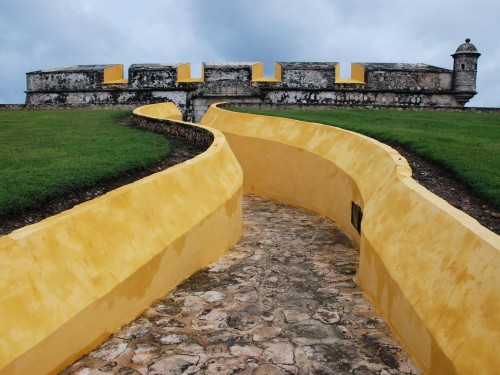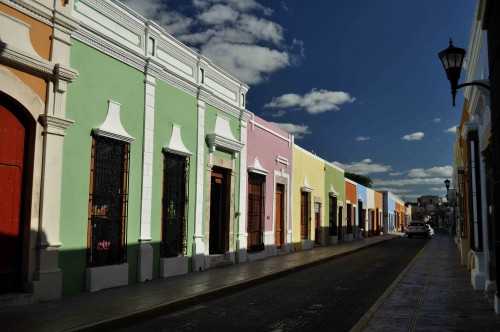San Francisco de Campeche, founded in 1540, is located on the shore of the Gulf of Mexico. In December 1999, it was recognized by UNESCO as the “Historic Fortified City of Campeche”.
Why did it receive this distinction?
Because of its buildings representing the military architecture of the seventeenth and eighteenth century; its traditional homes with Andalusian and Caribbean influence, and its model of urbanization of a Baroque colonial city.
This is the only walled city in Mexico; Campeche has 1,640 feet of walls, two doors, two forts and eight bastions, with defensive constructions in the shape of a pentagon.
What to do?
Tour the center of the city and view the colorful decorations of its mansions and its aligned streets, full of legends and stories. Visit the main forts, such as the Fort of San José, of San Miguel and of San Francisco. View the main bastions such as those of San Juan, San Carlos, Santa Rosa and others, which today serve as venues for exhibitions, botanical gardens, museums and historical monuments, respectively.
Taste the delicious shrimp cocktails with oysters, coconut shrimp and the traditional lime soup.
Fortified Treasure
As was done in Cartagena, Colombia, a thick stone wall shaped like a hexagon stretching some 2.5 km surrounds the city.
Eight strategically-placed fortresses made the city impregnable.
Although much of the wall is gone today (replaced by a highway surrounding the city), seven of the eight original bulwarks (baluartes) are still in place. (The east and west walls are virtually intact.)
All the bulwarks are of great interest, with museums, galleries, tropical gardens, auditoriums, and folk art exhibits. Explore the sights along a 2 km walk around the old city — one of the cleanest in Mexico! A labyrinth of tunnels also once connected these fortresses with houses throughout the walled city.
Two imposing forts were built on hills overlooking Campeche: San Jose el Alto (at the city’s northern flank) and San Miguel (just to the south of downtown). Each is worth a visit.
Fuerte San Miguel houses Campeche’s fine Museo de Antropologia. This museum showcases treasured works of art from the Campeche State Mayan sites of Edzna, Jaina, and Calakmul. The fort is in mint condition.
The other fort is Fuerte San Jose, on the old city’s northern flank. It houses a museum displaying colonial-era artifacts and nautical items.
The city’s main square (Parque Principal) is delightfully colonial, despite the presence of modern accents added in 1985. It is ideal for strolling or enjoying a refreshment at any of the open-air cafes that ring the square.
Just off the square stands the Yucatan’s Peninsula oldest cathedral, the Cathedral de la Inmaculada Concepción, begun in 1540.
Two blocks to the east, on 59th street, is the King Lieutenant’s House, now the National Institute of Antropology and History and at the end of the same street the Land Gate where a cultural light and sound show takes place.
To the north of the square is the Mansion Carvajal, one of the city’s many opulent mansions. To the south is the Casa de la Cultura, another example of Campeche’s colonial wealth. The mansion has been masterfully restored and displays an exquisite tile façade, Moorish styling and rotating art exhibits.
Also of note is the Ex-Templo de San Jose. This Jesuit church was built in 1756 and has a colorful baroque exterior of blue and yellow Talavera tiles.
Check out the Baluarte de Santiago for its lovely tropical garden containing 250 plant species set around a courtyard of fountains. The Baluarte de San Carlos contains the modest Museo de la Ciudad.
Source: visitmexico.com





